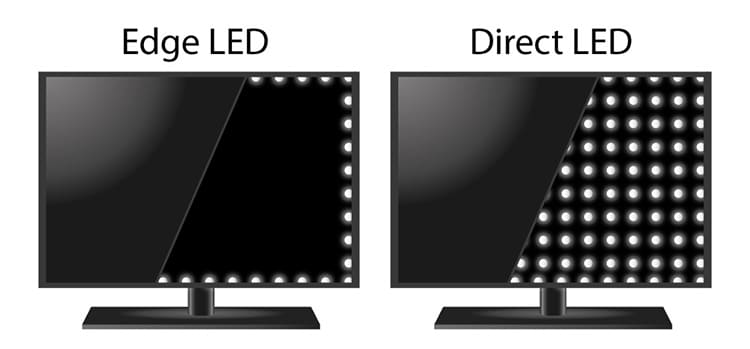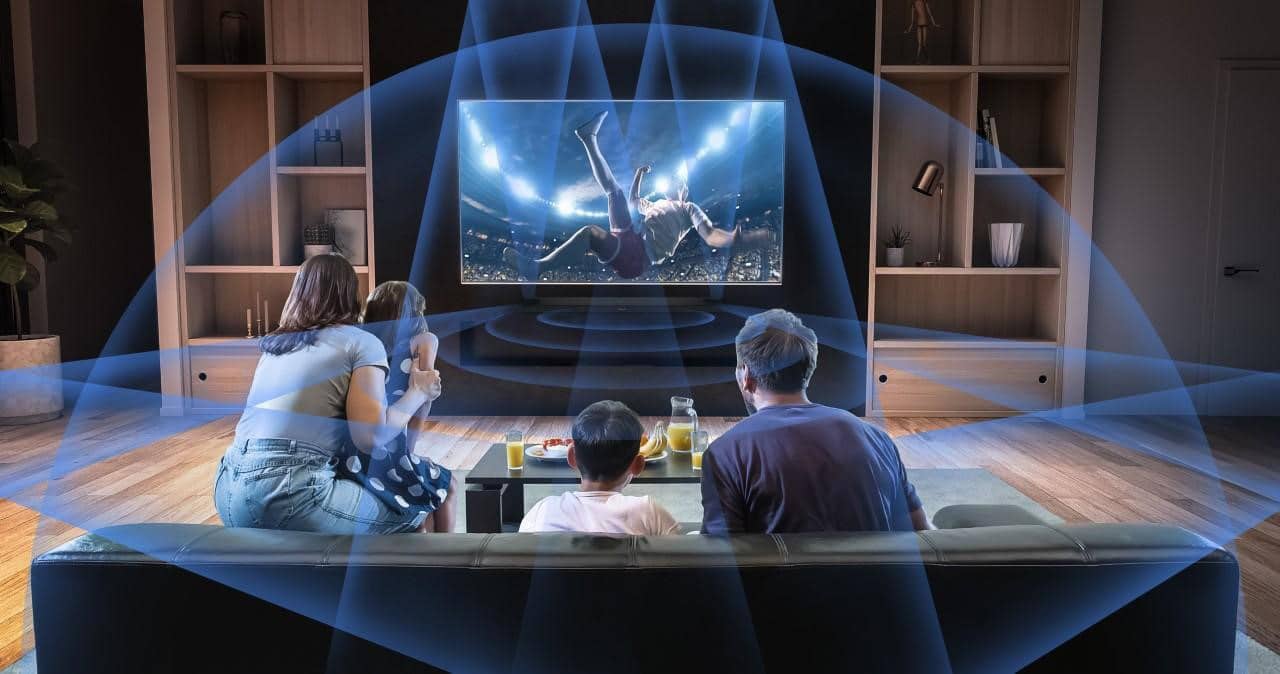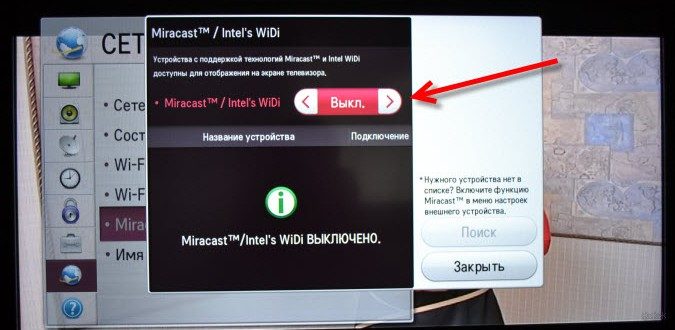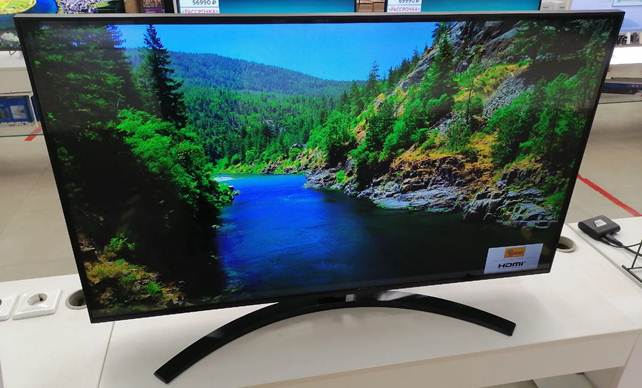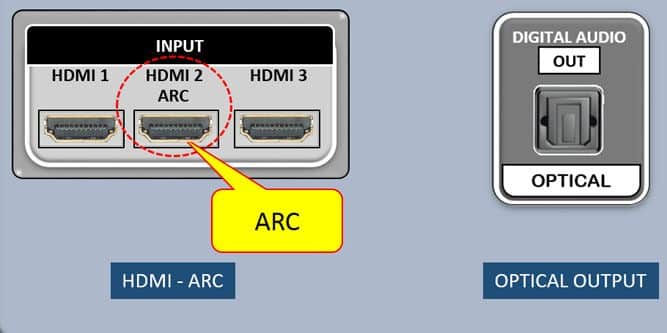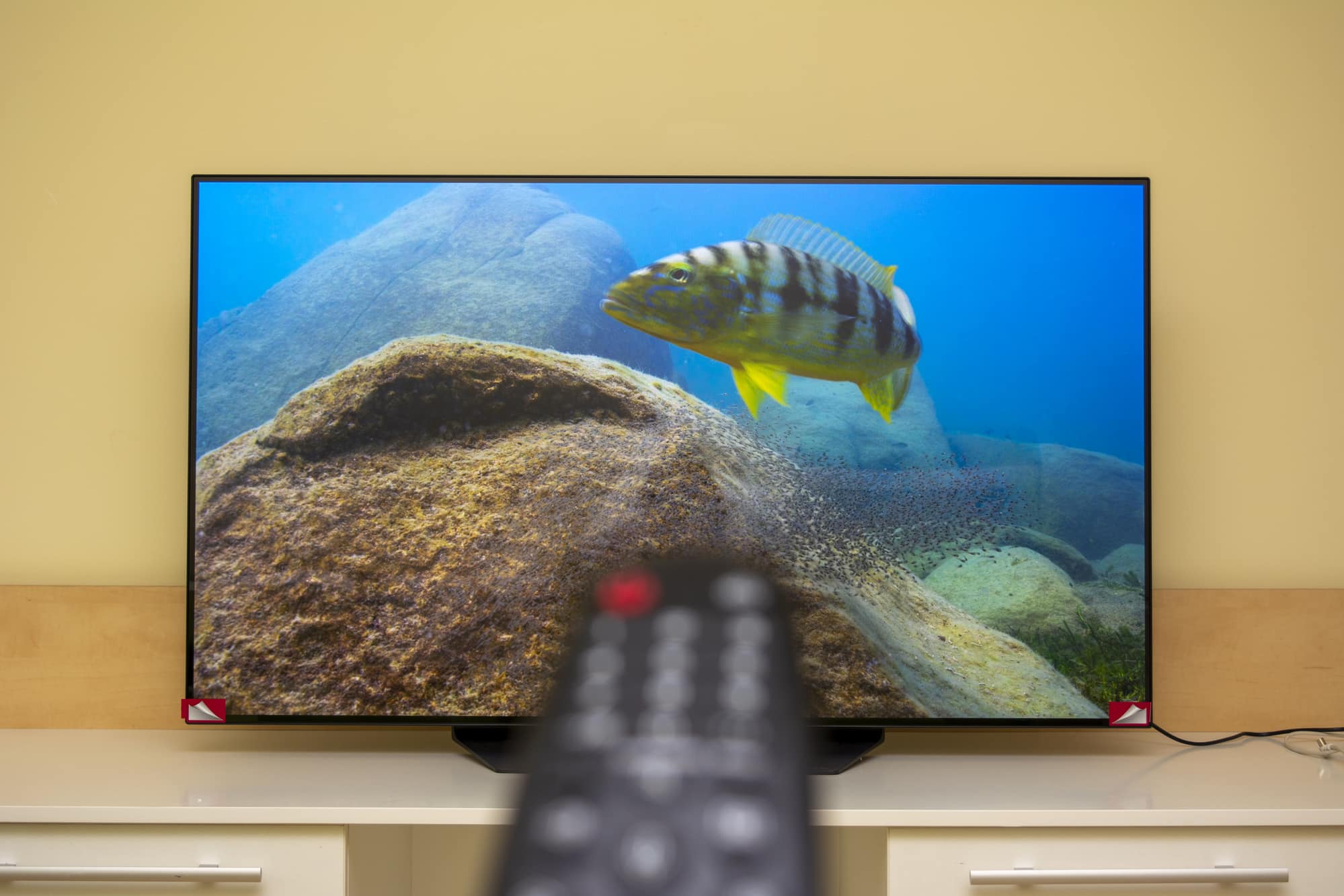Choosing an LCD LED TV is a solution that will last for many years, so you should pay attention to its parameters before buying. Paradoxically, a large screen size and
4K resolution do not always guarantee the highest image quality. In this post, we will explain the difference between Edge LED and Direct LED technologies.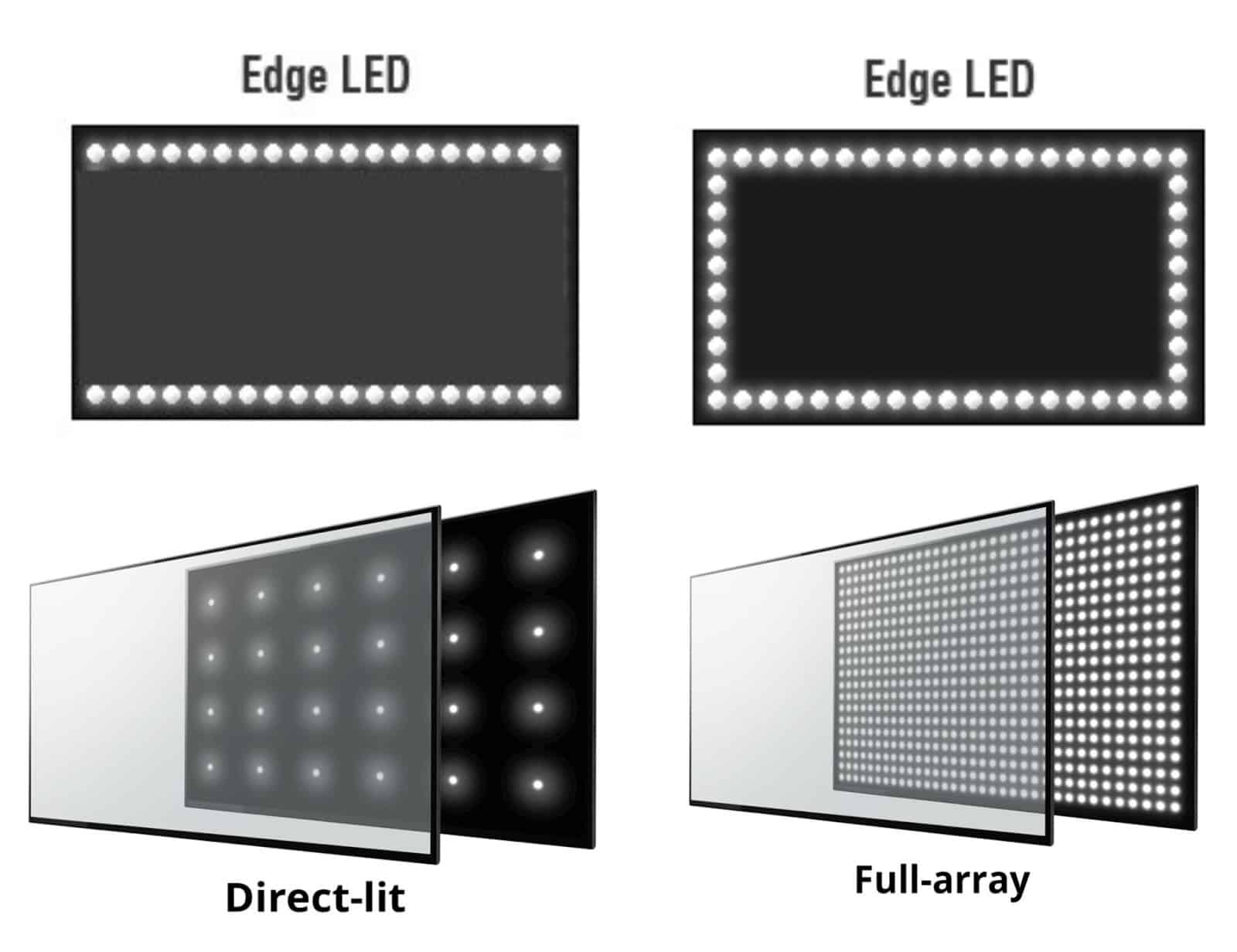
- Matrix backlight types in LCD LED TVs
- Direct LED – local dimming LED matrix for TV
- Advantages and disadvantages of direct lighting
- 3 modern TVs with Direct LED
- Samsung UE55TU7097U
- Sony KD-55X81J
- Xiaomi Mi TV P1
- Edge LED – what is it?
- Advantages and disadvantages of edge lighting
- Edge LED TVs
- LG 32LM558BPLC
- Samsung UE32N4010AUX
Matrix backlight types in LCD LED TVs
Since the late 1990s, LCD displays have begun to replace CRT screens, completely pushing them out of the market. What can we say about them after more than twenty years of presence in our homes? LCD TVs and monitors do not lose popularity and are still on top. Neither plasma screens, nor fashionable recently OLED have outdone them. https://cxcvb.com/texnika/televizor/texnology/amoled-ili-ips-chto-luchshe.html Over the years, only the type of matrix illumination has changed. Previously, cold cathode fluorescent lamps (CCFL) were used to illuminate it, today much more energy-efficient light-emitting diodes (LED) are used. Looking through the offers of online stores, you will surely come across the term LED TV. Remember that this is just an LED backlit LCD TV and has nothing to do with OLED technology.
- Direct LED – diodes are placed under the matrix and remain on throughout the entire operation of the TV. In the case of direct backlighting, manufacturers often use what is known as local dimming to achieve deeper blacks.
- Edge LED – LEDs are placed along the edges of the matrix. This is a power-saving solution, but as you will see later, it leads to uneven screen illumination.
The location of the LEDs has a significant impact on image quality. In the rest of the article, we will try to discuss each of these technologies in detail and find the answer to the question of Edge LED or Direct LED.
Direct LED – local dimming LED matrix for TV
Direct LED local dimming is an advanced technology that delivers deep blacks. Through the use of backlight control, the image quality is not available on conventional DLED TVs. Higher contrast is achieved. Light areas are dimmed independently, leaving bright areas clearly visible. This is a great alternative for those who are looking for an LED TV but don’t want to put up with the disadvantages of Direct or Edge. In TV specifications, you can often find the term Full Array Local Dimming (Samsung uses the term Direct Full Array), this is nothing more than a direct backlight with zones. They are installed in medium and high-end TVs. In the most expensive models, you will find up to 1000 zones, in the cheaper ones, usually only 50-60.
Advantages and disadvantages of direct lighting
Conventional DLED-backlight has many disadvantages in addition to the matrix illumination. TVs with Direct LED technology primarily have problems with black, which on their screens often takes on shades of gray. However, Direct LED is not so bad when combined with local dimming. It eliminates most of the shortcomings of the underlying technology. Images remain bright and crisp, while shadows take on depth.
3 modern TVs with Direct LED
Samsung UE55TU7097U
This is a 55″ 4K LED TV that supports HDR10+ and HLG. The model is equipped with a Crystal 4K processor, it provides high image quality and natural colors. The Game Enhancer system is useful for gamers, it guarantees low input lag. The UE55TU7097U also has a full range of tuners, and a multi-tasking remote control makes it easy to control your TV and connected devices, while Tizen System 5.5 gives you easy access to extensive smart TV features. TV dimensions with stand: 1231x778x250 mm.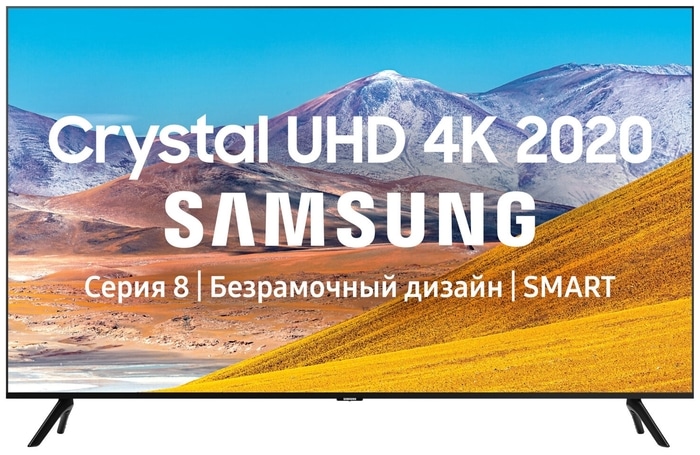
Sony KD-55X81J
This is a 55-inch model equipped with a 4K sensor with a refresh rate of 120 Hz, which guarantees its high smoothness. The manufacturer also took care of its quality by equipping HDR10 +, Dolby Vision and HLG equipment, as well as the HCX Pro AI processor, which, thanks to artificial intelligence, will automatically optimize the image to achieve the best effect. TV dimensions with stand: 1243x787x338 mm.
Xiaomi Mi TV P1
This is a modern device with a 32-inch Direct LED screen and a refresh rate of 60 Hz. The matrix technology used here guarantees incredible image quality and color richness, including more intense blacks. TV dimensions with stand: 733x479x180 mm. Direct LED or Edge LED, which backlight to choose and which one to refuse: https://youtu.be/P0CCeS9R6yU
Direct LED or Edge LED, which backlight to choose and which one to refuse: https://youtu.be/P0CCeS9R6yU
Edge LED – what is it?
In TVs with Edge LED technology, white backlight diodes are placed only at the edges of the matrix (in cheaper models, this may be only one or two edges). In order for the light from the LEDs to reach the farthest areas, an LGP module is needed to diffuse it. Backlit Edge LED screens are thin but have issues with uniform illumination. One row of LEDs is not enough for a good illumination of the entire contents of the display, and even a special module does not help much here. Typically, the image will be brighter at the edges than in the center. At the same time, the black areas will not be as dark as they should be. However, Edge LED TVs have a better contrast ratio than regular backlit TVs.
Advantages and disadvantages of edge lighting
Due to the low number of LEDs, Edge LED TVs are cheap to run. They impress with the slimness of the screen, which looks good in the interior. Edge LED is limited when it comes to natural color reproduction. To make matters worse, Edge LED is not the cheapest option because the technology requires a dedicated LGP distribution module.
Edge LED TVs
LG 32LM558BPLC
The Edge LED, HDR10+ and Quantum HDR technologies used here guarantee cinematic quality of the image, while Dolby Digital Plus provides a surround sound system and also allows you to adjust it to the content you are watching. TV dimensions with stand: 729x475x183 mm.
Samsung UE32N4010AUX
This is a 32-inch HD matrix TV, which is perfect for a bedroom or a children’s room. The Digital Clean View mode used here provides natural colors, while the Film mode adjusts picture settings to make watching movies even more enjoyable. TV dimensions with stand: 737x465x151 mm.
